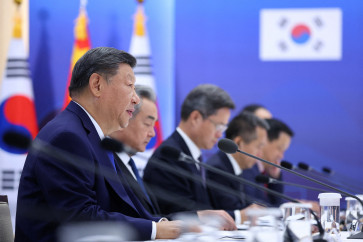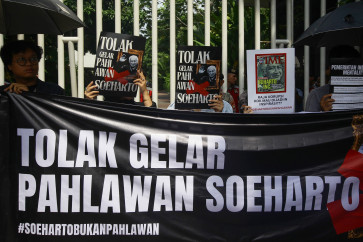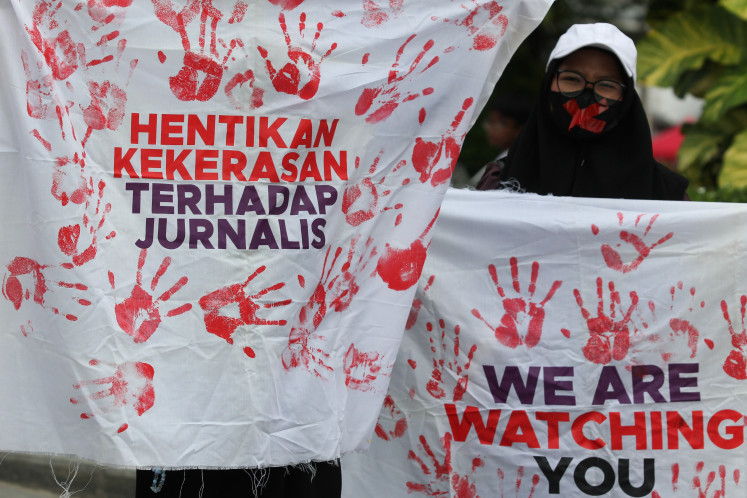Popular Reads
Top Results
Can't find what you're looking for?
View all search resultsPopular Reads
Top Results
Can't find what you're looking for?
View all search resultsThere’s still room for upgrade in ASEAN
Dialogue partners of the 10-nation ASEAN still see room for improvement in the regional grouping ahead of its 50th anniversary later this year, despite decades of success in maintaining regional peace and stability
Change text size
Gift Premium Articles
to Anyone
D
ialogue partners of the 10-nation ASEAN still see room for improvement in the regional grouping ahead of its 50th anniversary later this year, despite decades of success in maintaining regional peace and stability.
Progress in Southeast Asia has largely been achieved with the help of the dialogue partners, which continue to put ASEAN’s development at the forefront of its relations – the so-called ASEAN centrality principle.
While this mechanism has served the current 10 dialogue partners by complementing the bilateral relations between individual ASEAN member states, a few still feel there is a lack of unity within the group.
South Korea, for example, relies on ASEAN to be a decisive partner in maintaining peace and stability in the region, particularly in handling tensions on the Korean Peninsula or with China in the disputed South China Sea.
Simmering tensions between China and several neighboring states over the disputed waters in the South China Sea have already driven a wedge between ASEAN member states, stoking fears among traders operating in the busy waterway.
“More than 30 percent of our trade passes through the South China Sea, so much so that it is closely linked to our prosperity,” said Suh Jeong-in, South Korea’s Ambassador to ASEAN, during a panel discussion in Jakarta on Monday.
“We would like the South China Sea to be very stable,” said the envoy of South Korea, which gained full ASEAN dialogue partnership status in 1991 after two years of being a sectoral dialogue partner.
Both ASEAN and China, another dialogue partner, are currently drafting a code of conduct aimed at preventing open conflict in the resource-rich area, through which an estimated US$5 trillion in ship-borne trade passes every year.
Citing trade data between ASEAN and South Korea, Suh noted that over the period between 2005 and 2015 the volume of trade grew 2.3 times to reach $120 billion. With such stark numbers, Seoul aims to achieve a $200 billion volume of trade with the bloc by 2020.
Meanwhile for India, which became a dialogue partner in 1995, ASEAN needs to make it easier to do business if it wants more investments.
“They say money goes where it is welcomed [...] so when you want more investors to come you need to identify more sectors and open up the market more,” Indian envoy to ASEAN Suresh K. Reddy told the panel.
The volume of trade and investments between ASEAN and India remains relatively low compared to other dialogue partners, with total merchandise trade of $58.7 billion and foreign direct investment inflows to ASEAN of $1.6 billion in 2015.
In spite of this, India supports ASEAN through other means, such as by pledging $1 billion in assistance for physical and digital connectivity, or setting up a $75 million fund in support of small and medium enterprises in Cambodia, Laos, Myanmar and Vietnam for manufacturing activities.
Reddy also noted India’s support of people-to-people contacts, especially in conveying the message that the people of ASEAN are important partners in the regional integration process.
“Now when this process becomes stronger, naturally it enables us to become more active players in this process; it enables the dialogue partners to [...] pledge more support,” he said.
Beside South Korea, India and China, seven other ASEAN’s dialogue partners are Australia, New Zealand, the United States, Canada, Japan, the European Union and Russia.
The EU, Japan, the US, China and South Korea remained the top five foreign sources of FDI inflows to the bloc in 2015, although intra-ASEAN investment is still the largest source of FDI, with $22.2 billion in the same year.
Rizki Safary, the Foreign Ministry’s deputy director for external ASEAN cooperation with regional and international organizations, has meanwhile reaffirmed ASEAN’s position on temporarily banning new dialogue partnerships, urging prospective partners to intensify their relations with ASEAN.
“[ASEAN must place] itself in the center of the cooperation. We want to be a big family, but then with the growing number of partnership [requests, we want to have stable, mature partnerships],” Rizki said.
There are currently 30 applications for formal partnership with ASEAN, including for nine dialogue partners, seven sectoral dialogue partners, one development partner, one special observer and three observers.
As a rule of thumb, external parties seeking dialogue partnership status must have acceded to the Treaty of Amity and Cooperation and have intensive dealings with ASEAN member countries.










